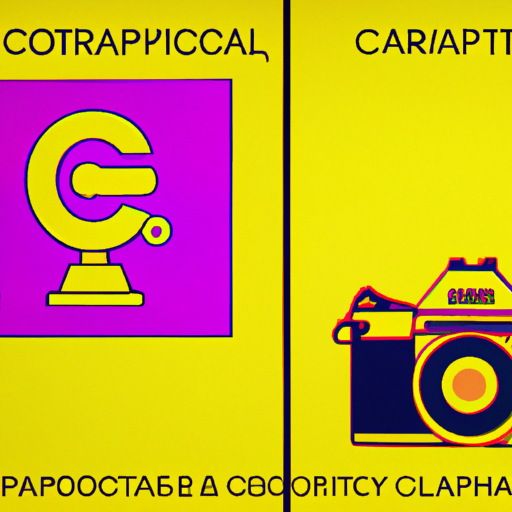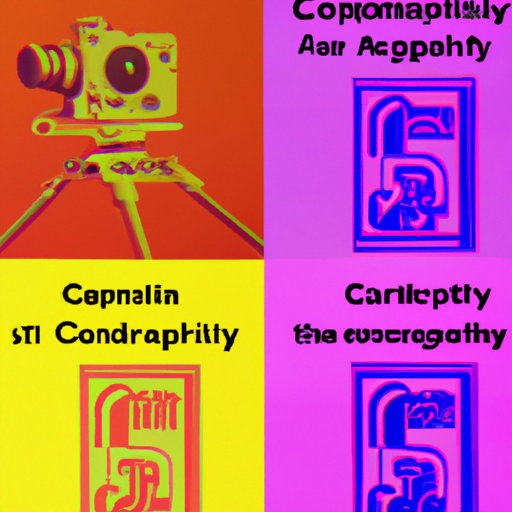
-
Table of Contents
- Graphic Design Ethics: Navigating Copyright and Plagiarism
- The Importance of Copyright in Graphic Design
- Case Study: Shepard Fairey’s “Hope” Poster
- Understanding Plagiarism in Graphic Design
- Example: The Pepsi vs. Coca-Cola Logo Controversy
- Navigating Copyright and Plagiarism: Best Practices for Graphic Designers
- Summary
Graphic Design Ethics: Navigating Copyright and Plagiarism

Graphic design is a creative field that requires a delicate balance between inspiration and originality. As designers, we often draw inspiration from various sources, but it is crucial to understand and respect the boundaries of copyright and plagiarism. In this article, we will explore the ethical considerations that graphic designers should be aware of when it comes to copyright and plagiarism, and provide valuable insights on how to navigate these issues.
The Importance of Copyright in Graphic Design
Copyright is a legal protection that grants exclusive rights to the creator of an original work. In the context of graphic design, it covers various aspects such as logos, illustrations, typography, and other visual elements. Understanding and respecting copyright is essential for graphic designers to maintain their integrity and protect their work.
When creating a design, it is crucial to ensure that it does not infringe upon someone else’s copyrighted work. This includes avoiding the use of images, fonts, or other design elements without proper permission or licensing. Failing to do so can lead to legal consequences, damage to your reputation, and potential financial loss.
Case Study: Shepard Fairey’s “Hope” Poster
A notable case that highlights the importance of copyright in graphic design is Shepard Fairey’s “Hope” poster. Created during Barack Obama’s 2008 presidential campaign, the poster became an iconic symbol of hope and change. However, it was later revealed that Fairey had used an Associated Press photograph as a reference without obtaining permission.
This case sparked a legal battle between Fairey and the Associated Press, ultimately resulting in a settlement. Fairey admitted to using the photograph without permission and agreed to share any future profits from the poster with the Associated Press. This case serves as a reminder that even well-intentioned designs can infringe upon copyright if proper permissions are not obtained.
Understanding Plagiarism in Graphic Design
Plagiarism is another ethical concern that graphic designers must navigate. It involves presenting someone else’s work as your own, whether intentionally or unintentionally. Plagiarism not only undermines the original creator’s efforts but also damages your professional reputation.
As graphic designers, it is essential to develop a strong sense of originality and avoid copying or imitating existing designs. While it is acceptable to draw inspiration from other works, it is crucial to add your unique perspective and creative touch to ensure that your design stands on its own.
Example: The Pepsi vs. Coca-Cola Logo Controversy
A well-known example of plagiarism in graphic design is the Pepsi vs. Coca-Cola logo controversy. In the 1970s, Pepsi introduced a new logo that bore a striking resemblance to Coca-Cola’s iconic logo. The similarity sparked outrage and legal action from Coca-Cola, accusing Pepsi of plagiarism.
This case highlights the importance of originality in graphic design. Copying or imitating another brand’s logo not only damages your reputation but also leads to legal consequences. It is crucial to create unique and distinctive designs that reflect your client’s brand identity while avoiding any resemblance to existing logos or designs.
Navigating Copyright and Plagiarism: Best Practices for Graphic Designers
Now that we understand the importance of copyright and plagiarism in graphic design, let’s explore some best practices that can help designers navigate these ethical considerations:
- Obtain proper permissions and licenses: Before using any copyrighted material, such as images or fonts, ensure that you have obtained the necessary permissions or licenses. This includes understanding the terms of use for stock images or fonts and properly attributing the original creators.
- Conduct thorough research: When starting a new project, conduct thorough research to ensure that your design does not resemble existing works. This includes checking for similar logos, illustrations, or typography to avoid unintentional plagiarism.
- Develop your unique style: Instead of copying or imitating existing designs, focus on developing your unique style and perspective. This will not only help you stand out as a designer but also reduce the risk of unintentional plagiarism.
- Stay up to date with copyright laws: Copyright laws can vary across countries and change over time. It is essential to stay informed about the latest copyright regulations and seek legal advice if needed.
- Give credit where it’s due: If you draw inspiration from someone else’s work, make sure to give proper credit. This includes acknowledging the original creator and providing appropriate attribution in your design or accompanying documentation.
Summary
Graphic design ethics revolve around respecting copyright and avoiding plagiarism. By understanding the importance of copyright, graphic designers can protect their work and maintain their integrity. Similarly, by avoiding plagiarism and developing their unique style, designers can create original and distinctive designs that reflect their clients’ brand identities.
When navigating copyright and plagiarism, it is crucial for graphic designers to obtain proper permissions and licenses, conduct thorough research, develop their unique style, stay up to date with copyright laws, and give credit where it’s due. By following these best practices, designers can ensure ethical design practices and contribute to the growth and integrity of the graphic design industry.
